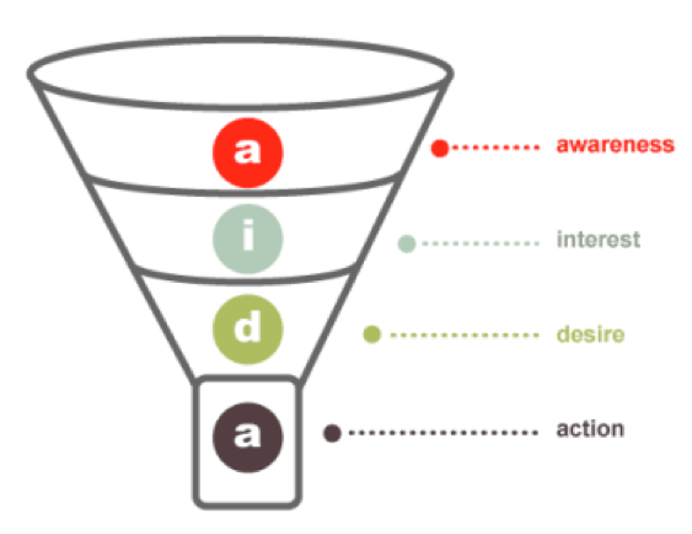How to Drive Engagement and Conversions Through Content Marketing

People in different parts of the sales funnel consume different types of content. So, how can your business format its website and content to both engage and sell. This article outlines steps for moving prospects through the sales funnel using content marketing.
Use the information to structure your website and content in a way that guides visitors along a path to conversion.
Define Your Objectives for Content Marketing
Defining your content marketing goals is the first step toward guiding website visitors along the customer journey.
Depending on the type of products or services you sell, you might identify with any of the following objectives:
- Encourage purchasing
- Drive subscriptions
- Increase enrollment
- Schedule sales calls
Before you begin producing content, define your end goal to establish clarity for your team.
Align Your Content With the Customer Journey
People’s purchasing journeys online typically follows the path mapped out in a sales funnel, which tracks four stages of purchasing intent from initial interest through purchasing action.
At the top of your sales funnel – in the “awareness” and “interest” stages, the focus of your content is to attract people to your website.

People at the top of the funnel want to learn about your industry, company, and products you sell.
Your goal for top-of-the-funnel audiences is to drive engagement: be the resource that people turn to for knowledge about a topic.
The content you should product to drive engagement at this stage answers questions that are common for unfamiliar audiences. Think about the questions you typically receive from people upon their first contact with your company – and format content around that subject.
Common interest stage content includes:
- “State of” articles
- Explainer videos
- FAQ pages
Create and promote this content to engage people who are curious about your services – that way, when they are interested in progressing towards purchasing, they will associate your company with that service.
Add Action Elements to Your Funnel to Convert Visitors to Leads
From your business’ perspective, the first step in the buyer’s journey involves converting website visitors to “leads.”
Leads represent the first level of interest audiences demonstrate toward your company. They come in the form of email subscribers or even site traffic to high-value pages.
Placing a call-to-action (CTA) in each piece of awareness-stage content and across your website advertising helps convert visitors to leads.
For example, Shopify includes a CTA at the bottom of its blog articles, encouraging readers to sign up for marketing tips.

Through this CTA, Shopify attempts to establish familiarity and authority with audiences interested in online marketing.
This audience likely operates with a website or digital property, so when they decide to shop for a new content management system or website building software, they may associate Shopify as the authority in that space.
Nurture Leads into Customers Through Email Marketing
Once you have captured an email address, use email marketing tools such as MailChimp to collect behavioral data and enhance how you personalize the buyer’s journey.
User action such as email opens and clicks offer clues about people’s stage in the buying process.
Use this data to segment your email list based on audiences’ stage in the sales funnel and use your emails to push each group to the next stage.
Interest-stage Content
The interest, or evaluation, stage represents the conversion of customers from curious to interested.
After learning the basics of an industry or service, prospects in the evaluation stage consume content that answers research-based questions; for example, about how a product works or the return on investment they can expect from investing in a service.
To respond this interest level, consider creating content that explains and demonstrates the value of your products and services.
These include:
- Webinars
- Product descriptions
- Case studies
- Product demos
Hatchbuck offers product tours to help potential customers learn and visualize how the software applies and provides value for their company.

The content you produce for the evaluation stage depends on your buyer personas.
B2B audiences, for example, spend more time in the evaluation stage than B2C customers, since the purchases they are considering are generally more expensive and impactful on the health of their business.
Decision-Stage Content
Decision-makers look for user-generated content before making a purchase. User-generated content (UGC) provides insight about the tangible impact of your services for your clients.
Examples of UGC include:
- Ratings and reviews
- Testimonials
- Social shares

UGC establishes social proof for your product – most people can recognize when content is advertorial in nature (though, if it’s high-quality, they don’t really mind).
User generated content provides authentic evidence that your company provides real value through its services.
Encourage your customers to provide reviews for your services, and promote it using your website and social media channels.
Publish Content That Converts
Create high-quality content for each stage of the journey to build trust with your visitors and establish your expertise. Then, convert your website visitors to leads with action-based elements such as CTA’s.
Finally, nurture leads into sales using personalized email marketing and website content that caters to every stage of the buyer’s journey.

